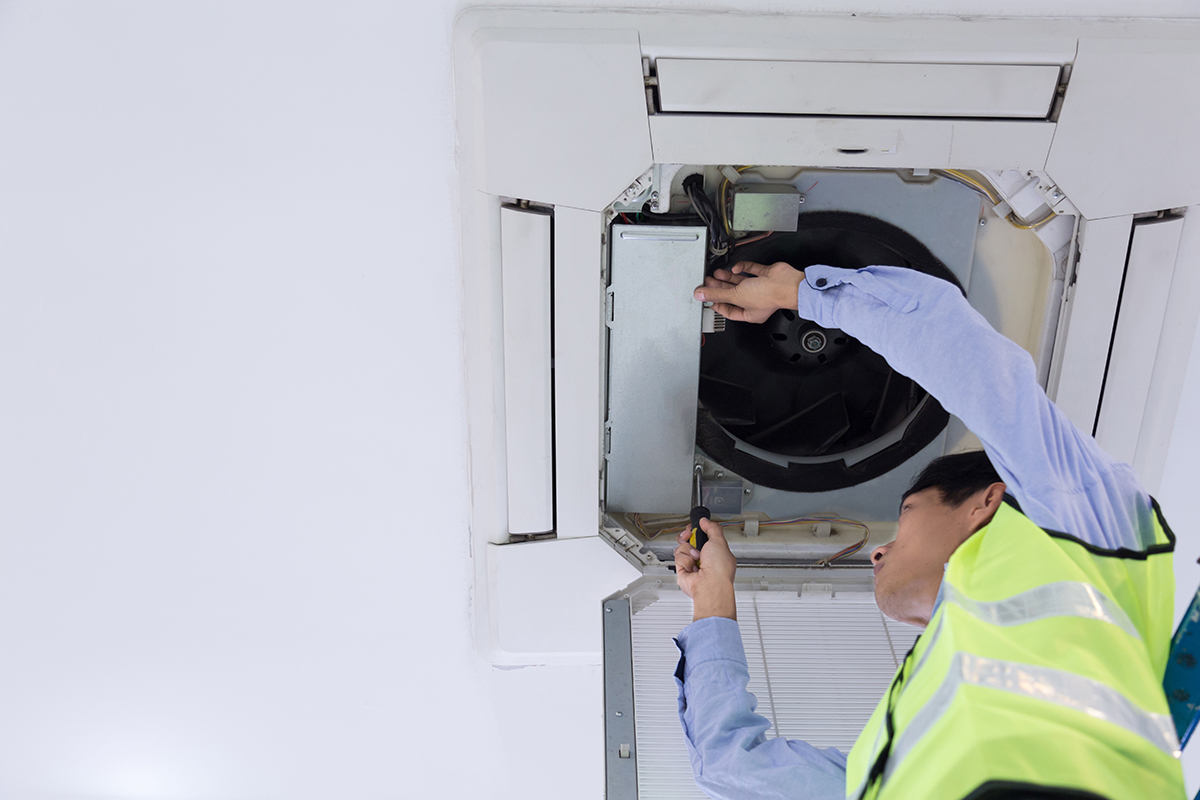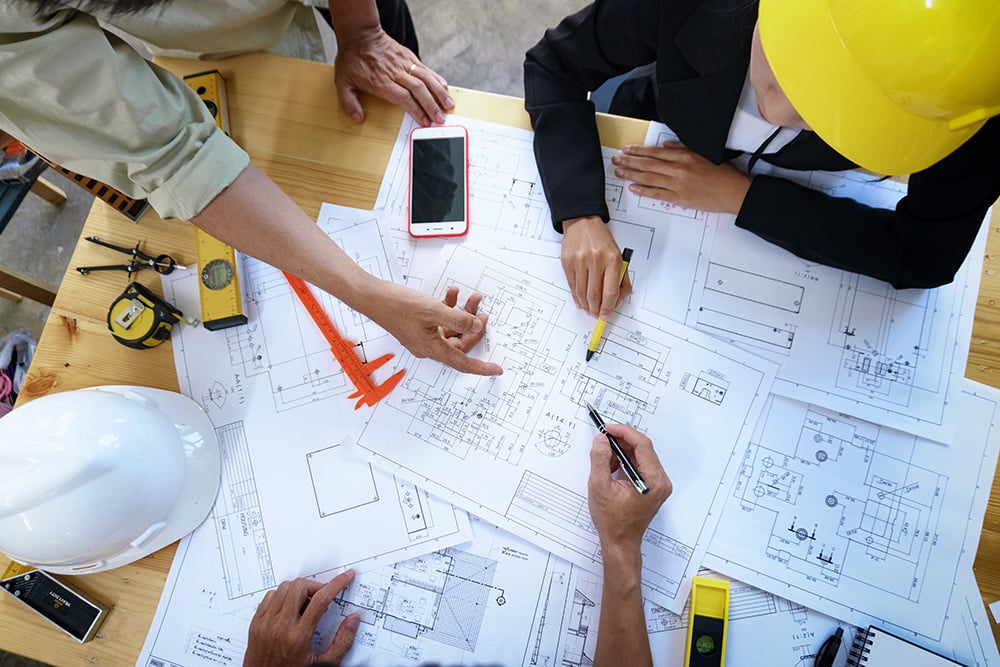Healthy Buildings Solutions and Services
Today, effective strategies for healthy buildings aren’t just a good idea—they are often essential to the success of commercial properties. Buildings IOT’s innovative solutions help you ensure that your building offers safe spaces for occupants and the larger community.
The Foundations of Healthy Buildings Solutions
In order to make buildings healthier, owners and facilities managers require data to inform their decisions. Without monitoring of multiple variables, it is much more difficult to understand issues a building might have or develop insights into how to solve problems that lead to unhealthy buildings. By integrating state-of-the-art IoT technologies and advanced analytics in your building management system (BMS) and deploying janitorial tracking software, Buildings IOT can create powerful healthy buildings solutions that protect occupants and your business.
Key variables to monitor include:
Indoor air quality (IAQ) can be impacted by gaseous, liquid, and solid forms of pollutants common to indoor environments, which can reach double outdoor levels. Poor IAQ often affects building occupants’ respiratory health, leading to lower productivity, and higher absenteeism among employees. Using automated control systems to ensure appropriate ventilation, keep humidity levels between 30-60%, conduct regular testing, and respond quickly to occupant concerns helps mitigate IAQ issues.
Smart sensors should be used to identify unhealthy contaminant levels that affect IAQ, including carbon monoxide, particulate matter (PM), ozone, and volatile organic compounds (VOCs) like benzene and formaldehyde.
An analytics-led smart BMS can continuously monitor IAQ-related variables and make automatic adjustments to HVAC and air filtration systems to ensure standards are met or exceeded at all times. This includes tracking:
- Carbon monoxide
- Particulate matter (PM)
- Ozone
- Volatile organic compounds (VOCs) like benzene and formaldehyde
A smart BMS is also critical for preventative maintenance, allowing you to resolve problems quickly—or prevent them from occurring in the first place.
Surface contamination can not only impact indoor air quality, it can also pose significant risks to occupants who come into direct contact with the affected surfaces. While measuring these contaminants is not always possible, regular sanitation is. Using janitorial software to track cleaning activities allows you to see what has been cleaned when.
Lighting provides both physical and psychological health benefits for building occupants. The North American Illuminating Engineering Society recommends illuminance between 300-500 lux, as artificial lighting that is too bright, too dim, or flickers too much can cause health issues, such as visual fatigue and retinal damage. Natural lighting from windows conversely offers health benefits, including lower blood pressure, improved sleep patterns, less mental fatigue, and the ability to perform significantly higher on tests requiring attention.
Automated lighting and control systems can ensure that lighting levels are appropriate for conditions and alert you if their operation falls outside normal parameters. In a smart system, lighting can be driven by variables like occupancy, outdoor lighting conditions, season, and time of day.
Moisture indoors can lead to the growth of mold or mildew. This can have a profound effect on human health, and it may be more common than you think; a 2014 study by the Environmental Protection Agency (EPA) found 85% of US office buildings had water damage, while 45% had active leaks. Sensors combined with smart control systems can help identify and remediate sources of unwanted moisture.
Safety and security in built environments can affect both psychological and physical health, including increased risk of hypertension, heart disease, and lower immune function. A central BMS can monitor access control, fire and smoke alarms, security cameras, and lighting in common areas to assist with safety and security issues.
Thermal health requires maintaining comfortable temperature and humidity levels. An analytics platform can continuously track indoor climatic conditions, identify underperforming zones, and respond automatically to changes in temperature and humidity.
Water quality requires regular testing to ensure you meet drinking water standards. If necessary, water purification systems should be installed to remove contaminants and microbes as well as prevent water from stagnating in pipes. Sensors for testing water for contaminants can offer additional protection.
What is Healthy Buildings?
Healthy Buildings, powered by onPoint, gives you unmatched insights into the performance of your healthy initiatives. It provides a centralized platform to monitor air quality by space, view analytics, run reports, and identify issues with industry-standard benchmarking for all of your IoT-enabled monitoring sensor technologies.
Healthy Buildings is a comprehensive solution that begins with expert guidance to help you choose the right sensors and locate the optimal placement for them within your facility. Our state-of-the-art analytics software with industry-standard benchmarking and real-time tracking software enables you to go beyond just seeing the numbers to empowering your efforts with actionable insights.

Key features and benefits:
-
A single-pane-of-glass platform enables you to monitor all the data from your disparate IoT sensors in a singular, cloud-based platform.
-
Janitorial tracking software lets your janitorial staff report in real-time what workspaces, common areas, facilities, and equipment have been cleaned and sanitized and are safe for use enabling you to better optimize your space planning and utilization efforts.
-
Intelligent analytics and benchmarking metrics empower you to go beyond simple dashboards. With access to historical data, machine learning and forecast modeling, plus industry-standard benchmarking metrics, Healthy Buildings provides real, actionable insights for your environmental initiatives.
-
Reports make it easy to provide accurate monitoring data to maintain WELL, LEED, and other certifications in addition to keeping your management team informed with clear, data-driven updates on your progress.
-
Healthy Buildings support provides expert advice to help you get your healthy building initiatives up and running and is available throughout your subscription to help you address issues and help track resolutions across your portfolio.
Certification & Standards for Healthy Buildings
As healthy buildings become a top priority, a variety of certifications and standards have been developed to guide building design and operation. With deep domain knowledge, Buildings IOT can help you meet the requirements of certification, including:
American Society of Heating, Refrigerating and Air-Conditioning Engineers (ASHRAE) Guidelines 62.1 & 62.2
These standards specify minimum rates for ventilation and other aspects that affect IAQ in order to reduce adverse health effects in humans. The intent is to provide a basis for regulations regarding IAQ in new construction and a guideline for improving existing buildings.
Metrics: These standards provide a comprehensive outline for regulations on ventilation and IAQ that includes sources and concentrations of air contaminants, perceptions of building occupants, design, and documentation.
LEED (Leadership in Energy and Environmental Design) Certification
Although LEED is known primarily for its focus on green building design, it also promotes the health and well-being of building occupants. LEED’s green building strategies complement the WELL Building Standard.
Metrics: LEED supports healthy buildings solutions to create healthier and safer built environments, with a focus on human health and comfort, air quality, and material selection. It assists designers in choosing non-toxic materials to ensure better IAQ to reduce respiratory illnesses.
RESET (Regenerative Ecological, Social and Economic Targets) Standard
This certification program for built environments focuses on using technology to improve and optimize indoor spaces. It creates standards for sensor-based monitoring, data quality, and cloud-based analytics software used to develop healthy buildings solutions.
Metrics: RESET defines conditions necessary for continuously monitoring buildings by providing tools consisting of certification services, leveraging digital tools to track data, conducting third-party audits, and providing cloud software to communicate outcomes and encourage engagement.
WELL Building Standard
Offered by the International WELL Building Institute (IWBI), the WELL Building Standard helps certify, measure, and monitor built environments for ways in which they impact both physical and psychological health. WELL certification involves applying strategies for design, management, and guidelines of built structures supported by recent scientific research, including input from medical professionals, public health experts, scientists, and others worldwide.
Metrics: WELL Buildings focus on performance-based standards offering flexibility on how projects qualify as well as prescriptive standards requiring specific designs, policies or technologies.
Detecting Unseen Issues
One of the most valuable aspects of an analytics-driven BMS is the ability to detect issues not readily apparent in seemingly healthy buildings. Drawing on sensor data, an advanced analytics platform with machine learning capabilities can provide critical insight into anomalies before they become actual problems, alerting maintenance staff as early as possible and making automatic adjustments whenever possible. This proactive approach not only helps you keep occupants safe and ensures you stay in compliance with regulatory requirements, it can also prevent costly equipment repairs. For example, a sensor picking up heightened levels of particulate matter (PM) might mean a filtration problem in the ventilation system that would otherwise not have been detected until catastrophic equipment failure.


Liability Factors for Unhealthy Buildings
Liability concerning poor IAQ and other problems affecting unhealthy buildings is a real issue. While speculative developers tend to feel little responsibility toward IAQ unless a problem becomes bad enough to result in litigation, building owners who look at these structures as assets can bear the brunt of poor designs that fail to consider the health of building occupants. IAQ problems should be dealt with quickly to reduce the chance of litigation, with best practices followed to protect building occupants as work is done.
Creating a Healthy Buildings Strategy
Integrating IoT technologies and advanced analytics in your BMS is a vital first step toward a healthy building. But an automated system only works as well as the strategy that supports it. You also need a plan to deal with the issues an intelligent system might reveal.
Consider the following as part of an overall healthy building strategy:
- Collate already collected data to look for correlating data that identifies any issues.
- Communicate benefits of healthy buildings solutions to stakeholders and how these impact specific departments.
- Consider using surveys of building occupants to understand their perceptions of how healthy a building is.
- Create an executive position that specifically deals with the health and well-being of building occupants, including defining specific roles and responsibilities.
- Glean data from human resources on conditions associated with built environments, including medical problems, sick days taken, and employee turnover.
- Identify the metrics associated with health buildings and compare your building to similar built structures, national averages, and best practices.
- Keep messaging as simple and clear as possible.
- Look at how healthy buildings solutions can help your business achieve its broader aims.
- Use independent third-party accreditation organizations to guide and drive the process.
- When looking at new construction, target issues that have the biggest impact.
By communicating expectations clearly, you can ensure all stakeholders understand objectives for achieving healthy built environments.

Buildings IOT offers industry-leading technologies and services to help you deploy healthy buildings solutions that make sense for your property. From unifying building systems to developing custom solutions using onPoint, our cloud-based analytics software, we are with you every step of the way.
We also offer BuiltSpace, an innovative platform to help you track custodial functions and building maintenance. To monitor cleaning tasks or equipment assets:
Stick QR codes on the surfaces and equipment you want to track.
Cleaning crews or system maintenance teams scan the QR codes when they finish cleaning or checking equipment operation.
Data from their work will be automatically uploaded for tracking in the BuiltSpace mobile-first system.
By providing real-time insights into sanitation practices and maintenance, BuiltSpace allows building owners and managers to make built spaces healthier and assure occupants that their areas are in fact clean and healthy. It also assures occupants of the safety of your building, as you can make BuiltSpace data available to all interested audiences—from tenants in office buildings to parents of children attending in-person classrooms.

5 Steps to a Healthy Building
While COVID moved building owners and managers towards upgrading many of their systems to make them safer for tenants, the need for healthy buildings transcends any pandemic. Our free e-book offers a guide to help building owners develop healthy buildings solutions and keep occupants safe.
It includes guidelines for:
- Cleaning
- Reporting
- Sensing
- Tracking
- Ventilating


